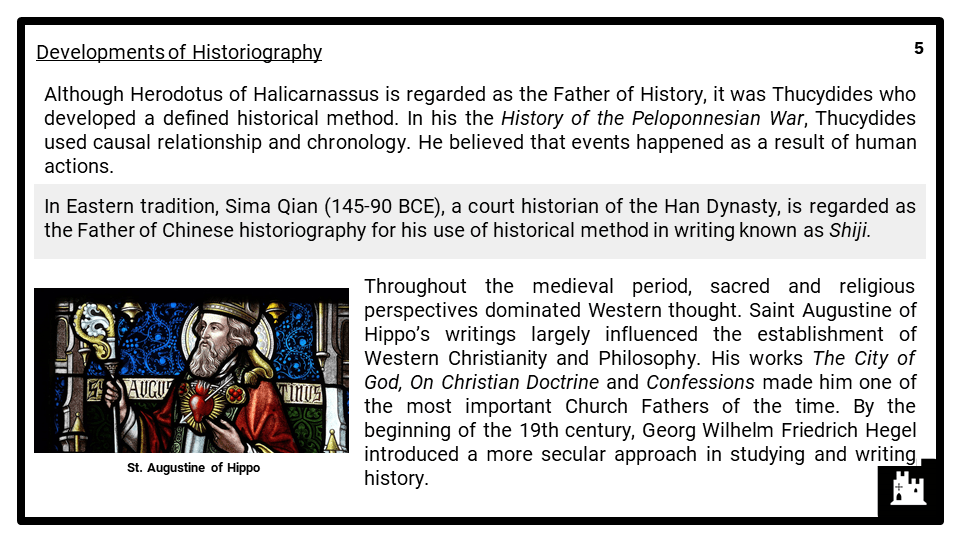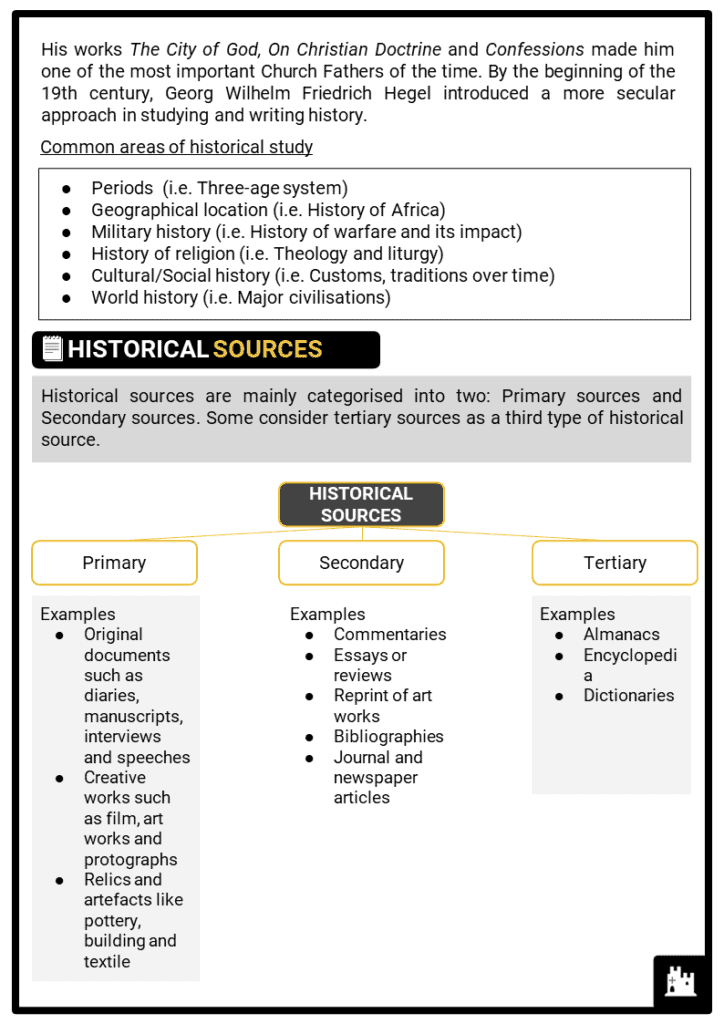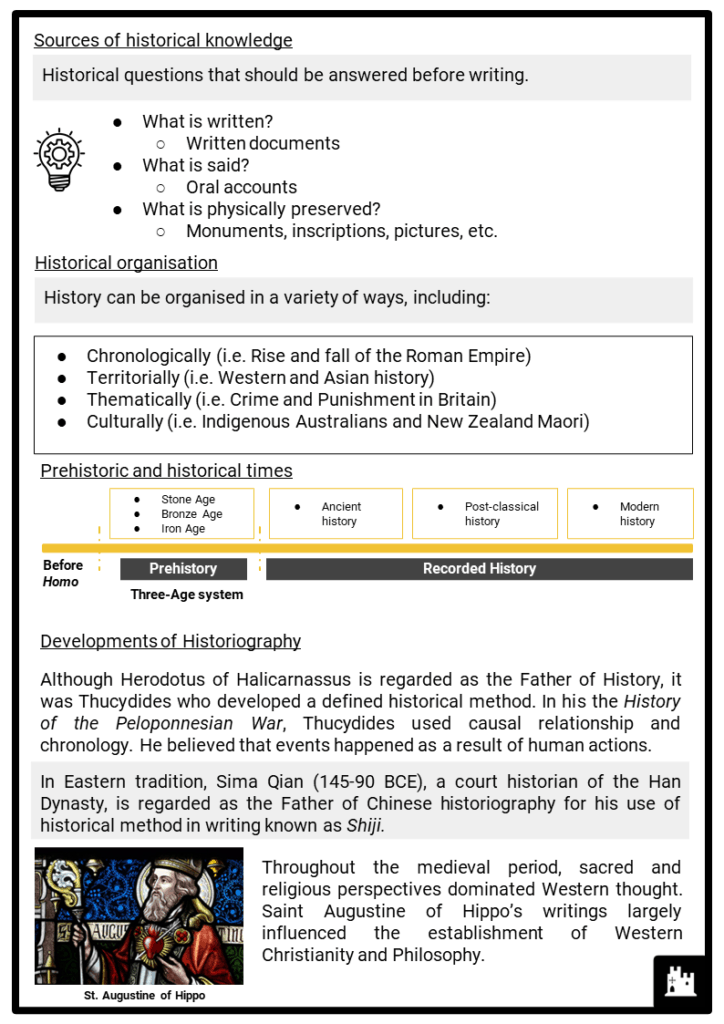Download Historical Key Skills: Introduction to Different History Source Types
Do you want to save dozens of hours in time? Get your evenings and weekends back?
Our worksheet bundle includes a presentation and printable worksheets. Perfect for both the classroom and homeschooling!
Introduction to Different History Source Types
This resource covers DIFFERENT HISTORY SOURCE TYPES used in several topics, including:
- Ancient Rome
- Maya Civilisation
- Ancient Egypt
- The Black Death
- Bayeux Tapestry
- Second World War
- Public Health in Britain
- Mao and Communism in China
Excerpt
Defined as an inquiry of the past, history is an ancient discipline that is understood through fragments of sources subjected to observation, examination, interpretation and evaluation by historians and scholars.
From merely narratives about the past, some historians argue that knowledge and understanding of history is useful in providing perspectives about the present. In contrast with legends and myths, history is supported by evidence.
Herodotus, an ancient Greek scholar known in Western tradition as the Father of History, and Thucydides, a contemporary, established the foundations of modern history we know today. According to Benedetto Croce, an Italian philosopher and historian, “all history is contemporary history”. He defined history as a discourse of the past written through analysis of available historical records. Historical discourse involved identification and analysis of accurate and reliable accounts. In the 20th century, study of global history was revolutionised by Fernand Braudel, a French historian who introduced a multidisciplinary perspective on history. He used outside disciplines such as anthropology, economics and geography.
LEARNING OBJECTIVES
At the end of the module, students should be able to:
- Understand history as a discipline of study;
- Analyse how historical sources are classified as primary and secondary; and
- Evaluate the significance of sources in understanding and writing history.
RESOURCE CONTENT
- History as a discipline
- Sources of historical knowledge
- Historical organisation
- Developments of historiography
- Common areas of historical study
- Historical sources
- Primary sources
- Secondary sources
- Practice assessment




